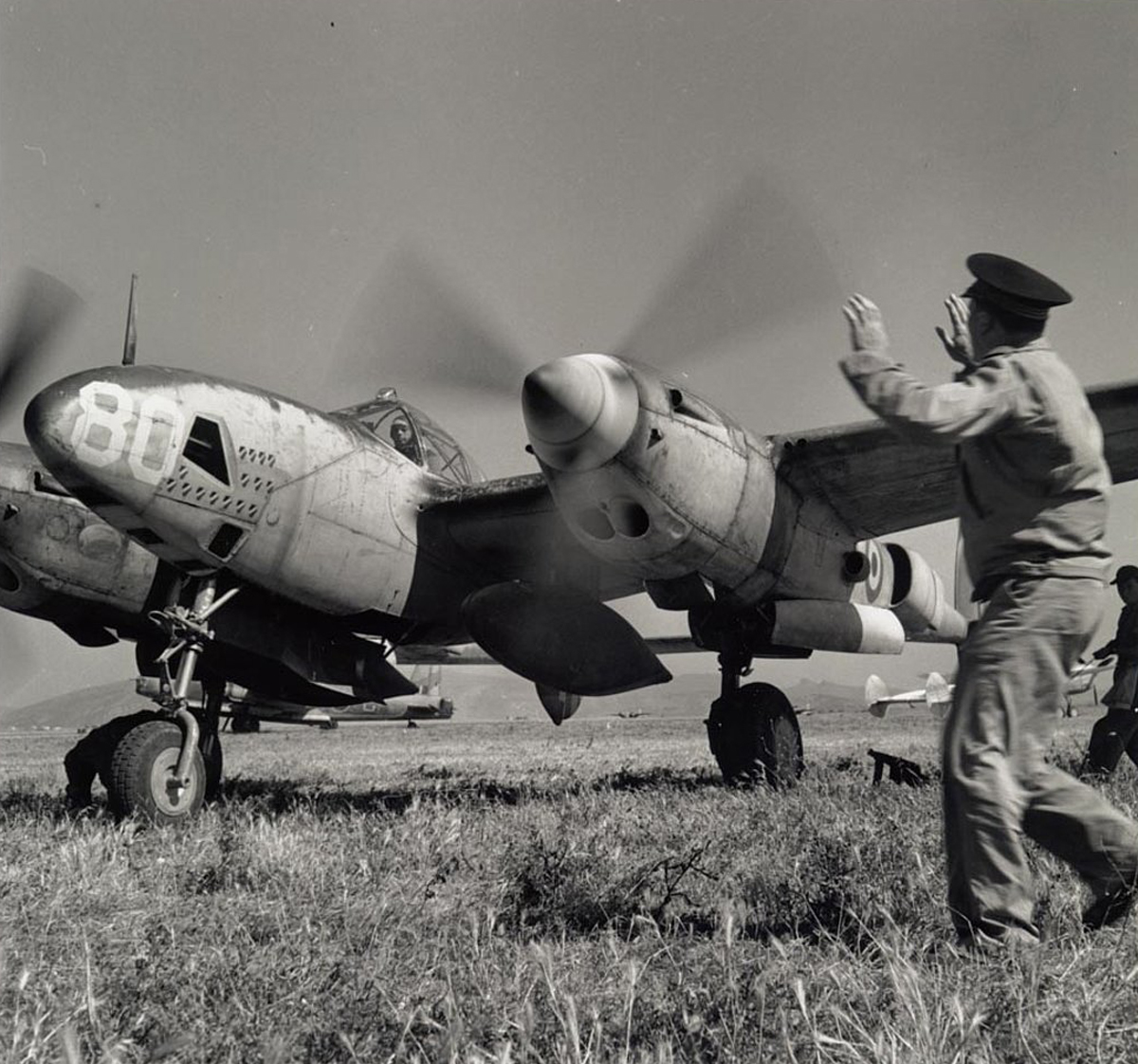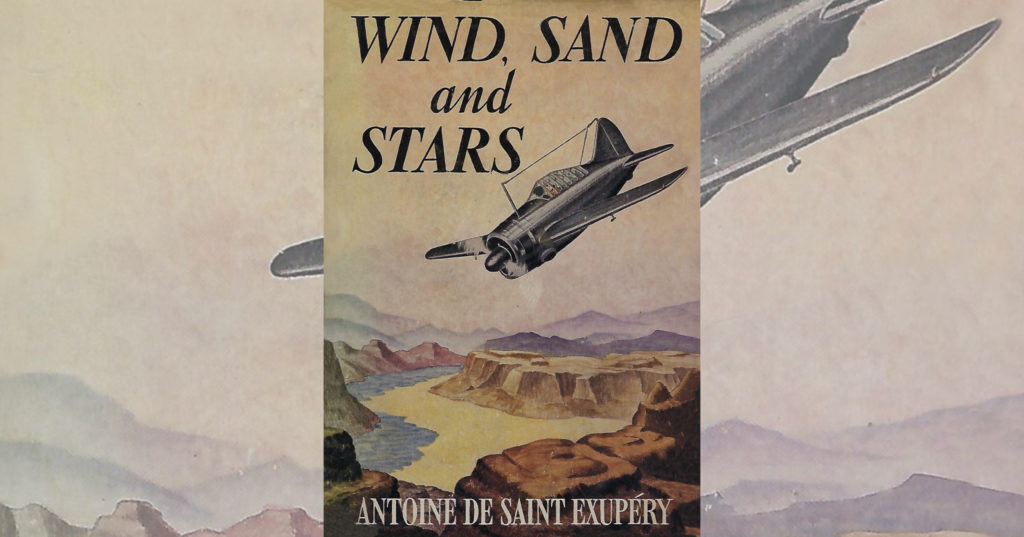Antoine de Saint-Exupéry was a writer who flew, not a pilot who wrote. He was a dreamer, not a technician. An artist, not a by-the-numbers guy. A kick the tires and light the fires aviator, not a checklist reader. He habitually flaunted basic flight safety rules to the point of a seeming death wish. Yet against all odds, he managed to survive—until his luck ran out over the Mediterranean one day in 1944.
Saint-Exupéry didn’t fly in World War I, since he came of age for conscription the day after the Armistice was signed, but he began his aviation career with a ride in a cobbled-together Berthaud-Wroblewski metal monoplane—precedential for the time—in 1912 and later trained in the most primitive planes of the era. He became a French military pilot in 1921, flying fighters very much like wartime Spads and Nieuports, and also worked as an airmail pilot, roaming much of the length and breadth of Africa and South America.
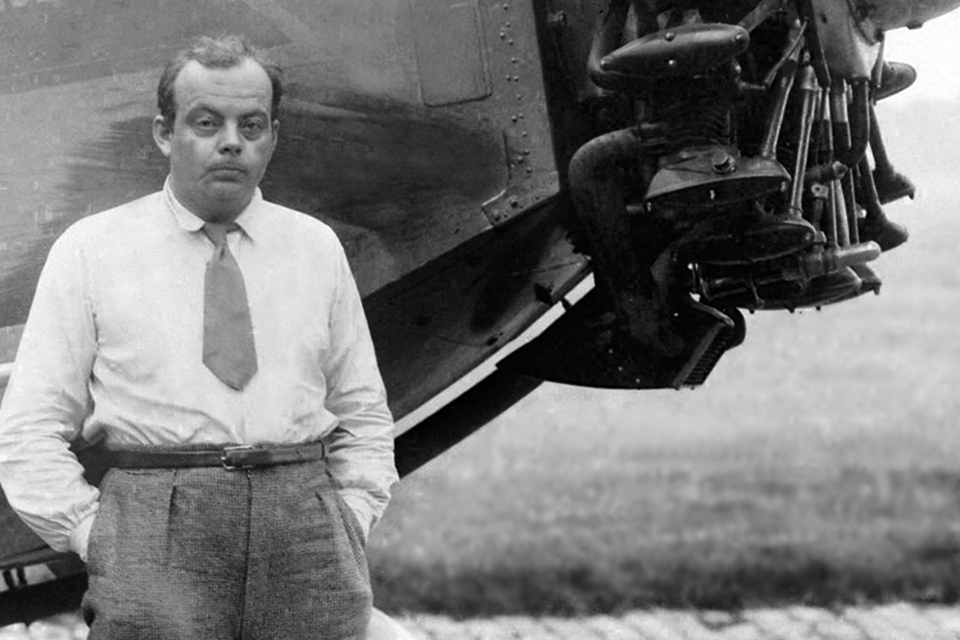
He briefly became a passenger airline pilot, then tried as hard as he could to kill himself while attempting long-distance record flights in his own single-engine four-seat Caudrons— yes, plural, since he totaled two of them. He ended his career as a French air force pilot flying the F-5B reconnaissance variant of the Lockheed P-38 Lightning, one of the more sophisticated 1940s aircraft and the plane in which he mysteriously died.
Other WWI–era pilots were active in World War II, but they’d all been deft enough to become colonels and generals, so they flew desks. Brilliant, irascible, dreamy Saint-Ex was usually broke, bone-broken or out of work. He was a galoot, a bear of a man who was at the same time clumsy and artful. As a pilot, it was never clear whether he was purely fearless or flatly careless.
Though his mail career lasted only six years, it produced two novels, Wind, Sand and Stars and Night Flight, that stand at the top of the pantheon of great aviation literature. Yet oddly, Saint-Exupéry is far more widely known for The Little Prince, ostensibly a children’s book, which to this day sells hundreds of thousands of copies a year but has little to do with flying.
Throughout his short life, Saint-Exupéry was a puller of strings, a user of friends and acquaintances in high places, a conniver and a wangler. Had he not been, he’d have nicely survived the war: Every U.S. Army Air Forces rule governing fitness to fly a P-38 had been broken to get an overweight, overage, underskilled and disobedient Saint-Ex into its cockpit. He even infuriated his superiors by using a photorecon flight over southern France to snap pictures of a relative’s chateau rather than the potential invasion beaches he’d been sent to shoot.
It was string-pulling that got him into the cockpit in the first place. The French only allowed conscripts who’d been civilian student pilots to pursue flight training, and the fighter squadron to which Saint-Ex had been sent as a ground crew private was based at a field that forbade military training in any case. Yet somehow his CO got leaned on hard enough to allow 21-year-old Saint-Exupéry to take private lessons on the civilian side of the airfield. Beginning in a Farman F.40, after 21⁄2 hours he soloed in a British Sopwith, “a civilian plane belonging to a company authorized only to offer joyrides, under the supervision of an ex-pilot of the Germany army who had never before trained a student,” according to Stacy Schiff’s superb biography, Saint-Exupéry.
Saint-Ex managed to get himself transferred to a fighter squadron in Morocco as an official flight trainee and soon was flying 150- mile North African round-robins in Breguet 14s and ultimately making lonely solo five-hour trips to Morocco’s southern border and back to Casablanca. In January 1922, he earned his wings.
Little more than a year later, he had his first major crash. Sub-Lieutenant Saint-Exupéry took off from Le Bourget, outside Paris, in a Hanriot HD.14—an airplane he wasn’t rated to fly—and spun in from about 300 feet, having gotten too slow and steep on climb-out, nearly killing his passenger. He was grounded for what the accident report called “his too-lively interest in trying all types of planes,” though it went on to affirm that he apparently had an early version of the right stuff: “Made to be a fighter pilot. Excellent flyer. Inspired.”
Recommended for you
Unfortunately, Saint-Ex was in love at the time, and his fiancée’s reaction to the crash was my way or the highway: Quit flying or I’m gone. So Saint-Ex quit the French Armée de l’Air (she nevertheless dumped him months later) and became, of all things, a bookkeeper, then a mechanic and ultimately a traveling salesman for a truck manufacturer.
It would have been a stunning loss to the world of letters had Saint-Exupéry come to write about flogging the French version of Mack trucks, but in 1926 he for the first time began flying for a living. Again through the intercession of a family friend, this time an air force general, Saint-Ex got a job as a sightseeing-hops pilot and immediately applied for a French airline transport rating, so he could carry passengers for hire.
But there didn’t seem to be much of a future in carrying passengers. Flying was a miserable, cold, noisy and dangerous experience; the major opportunity for commercial pilots instead turned out to be with the airmail lines springing up all over Europe. France’s most ambitious contender was Compagnie Latécoère, soon to become Latécoère (an airframe designer and manufacturer), and Aéropostale (“the Line,” which by 1930 would become the world’s most extensive airmail operation). Its operations director, Pierre Deley, was a former fighter pilot and war hero who noted in his memoirs that Saint-Exupéry’s logbook “was not much more impressive than that of a hobby pilot.” Saint-Ex had about 300 hours total time, but his boss apparently saw the same ambition noted in the Le Bourget accident report and hired the young man.
Interestingly, nobody seems to have recorded how many hours Saint-Ex ultimately logged in his flying career, though the number would have been substantial. An acquaintance once asked him how many hours he had spent flying, and he answered: “Don’t know. Do you count the hours you’ve spent in an elevator?”
Saint-Exupéry started out with the Line as a mechanic, the same apprenticeship that all of the company’s pilots served. Virtually all were war vets, and Deley saw this as a way to cut them back down to size before allowing them into a cockpit.
As would happen throughout his flying career, Saint-Ex was not always taken entirely seriously. He was arty, dreamy, capricious, famously clumsy and had little use for rules. And of course he was an aristocrat; at one point he had to ask his mother to stop addressing her letters to “Count” Saint-Exupéry.
The more flying hours Saint-Exupéry logged, the more nonchalant he seemed to become. It was never really clear whether he was brave or a fool, but it soon became apparent that the Line’s mechanics as frequently as possible elected not to fly with him and that his fellow pilots thought very highly of him as a writer, raconteur, companion and card-trickster…but not as a pilot when they were required to fly as his passenger.
The Line stretched from Paris to the Mediterranean, then soon across to Africa and eventually to all of France’s colonies throughout that continent. Saint-Exupéry became a station chief in Africa, yet flew constantly as well. It was in the cockpit, especially at night and on perilously long flights, that he was at his most thoughtful. As Anne Morrow Lindbergh once wrote of him after Saint-Ex became a family friend: “How is it possible that he kept his mind on the gas consumption while pondering the mysteries of the universe? How can he navigate by stars when they are to him ‘the frozen glitter of diamonds’?”
Some of Saint-Ex’s (and his fellow pilots’) most famous flying experiences, after they became a part of his writings, took place in Patagonia, the region in southern Argentina so windy that it’s sometimes called “the country where the stones fly.” After becoming the operations director for the region, Saint-Exupéry is said to have issued an order prohibiting pilots from landing at the town of Comodoro Rivadavia when wind speeds exceeded 90 mph—roughly the cruising speed of the older Latécoère-made mail planes. In her biography, Schiff details the typical landing procedure for an Aéropostale mail plane when the wind was up: A dozen Argentine soldiers would form two lines, and the pilot landed between them at cruising speed, holding the tail up. Several soldiers would trundle a trolley under the tailskid, and others would hook long bamboo poles to pad eyes under each wingtip, while the pilot—often Saint-Ex—taxied into the hangar, where the throttle could finally be retarded.
Saint-Ex seemed a brave, skilled but casual pilot. He once landed a Latécoère so hard that he essentially broke its back, snapping two of the four metal fuselage longerons. After enlisting a local blacksmith to effect a repair using fence wire, Saint-Ex flew the airplane back to Buenos Aires, by which time a crack had opened that literally was visible from the ground. “You’re sick,” the chief mechanic at BA yelled at him after he landed. “The fuselage was about to break in half!”
Yet he flew no matter what the wind, for hours at a stretch and always got the mail through. For him, the idea of “the mail” was sacred. “What is inside has little importance,” he once wrote. That the Line, the system, existed was everything. What letter-writers used it for was their business.
In his six years as a mail pilot, Saint-Exupéry moved from a Breguet 14—equivalent to the de Havilland DH-4s in which the earliest U.S. airmail pilots died by the dozens—to more advanced Latécoère 25s and 26s and ultimately the closed-cockpit Laté 28. The 28 seemed to him incredibly advanced. “Aéropostale has lost much of its charm,” he wrote, “since the advent of reliable motors and radiotelegraph. Now our engines are foolproof, and there is no reason to know our route because the direction-finder indicates it for us. Frankly, flying under these conditions is a bureaucrat’s affair.”
Of course he was commenting as someone accustomed to the state of aviation in the hinterlands in the 1930s. On a 1938 visit to the United States, he was stunned to find that radio beacons were broadcasting signals 24 hours a day, defining air routes all over the country. He rode in a Douglas DC-3 airliner from Dallas to New York, IFR from takeoff to touchdown— still unheard of in Europe—and was baffled that the other passengers all considered it routine. The state of his own radio-era aviation sophistication was amply demonstrated by the fact that Saint-Ex had once landed an airplane at Washington National Airport without bothering to call the tower.
Aéropostale fell into bankruptcy and eventually became a minor part of what was to become Air France, and Saint-Exupéry’s career as a commercial pilot ended. Air France hired him as a PR man, but it was largely an attempt to parlay his by-now considerable fame as a writer into positive spin for the airline. It must have galled him that his contemporary Charles Lindbergh had been actively seeking, surveying and pioneering routes for his own airline employer, Pan Am.
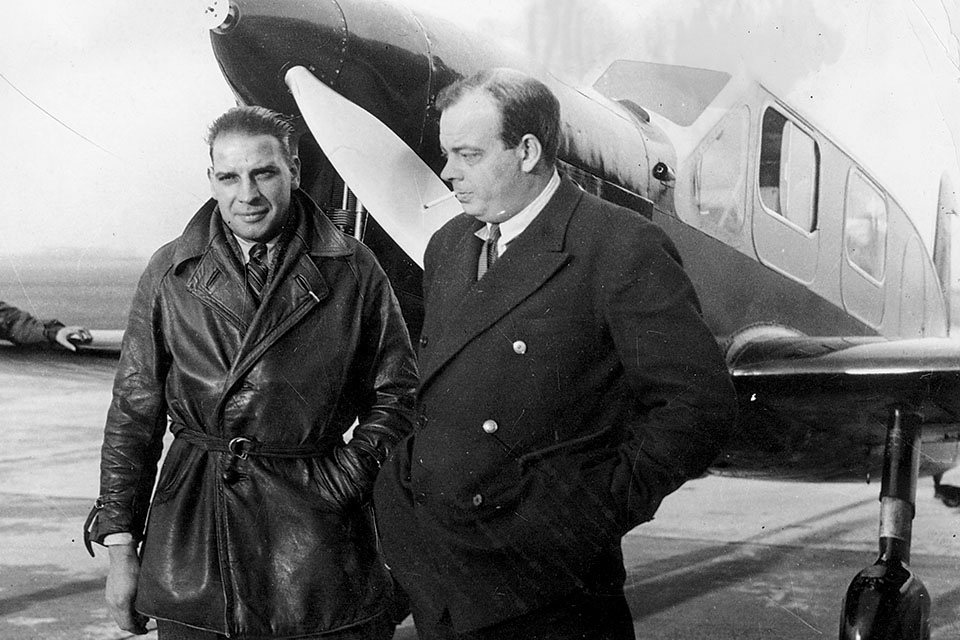
For his part, Saint-Ex acquired a four-seat, 180-hp Caudron monoplane called a Simoun—French for sandstorm—that was quite advanced and fast for its time, much like the contemporaneous Messerschmitt Bf-108. It was almost certainly some sort of gift from the manufacturer, since Saint-Ex never seemed to have two francs to rub together, and when he did, he spent them taking all his friends out to dinner. He decided to use the Simoun to set a Paris-to-Saigon record, to win a 150,000-franc prize that the French air ministry had offered. But he made it no farther than Libya, where he somehow flew into the ground—an enormous sand dune, fortunately—at the airplane’s 170-mph cruise speed in low-visibility conditions. The airplane was, of course, a complete write-off.
Three years later, he had acquired another Simoun and was determined to use it to make a flight no other Frenchman had—the length of both North and South America. Why the nationality of the pilot mattered or why Montreal fairly constituted a starting point for “the length” of North America became irrelevant when Saint-Ex turned the second Simoun into scrap in Guatemala while making a short-field takeoff in classic high-density-altitude conditions, complicated by the fact that the airplane had unknowingly been overloaded with 20- percent-larger Imperial gallons of gasoline.
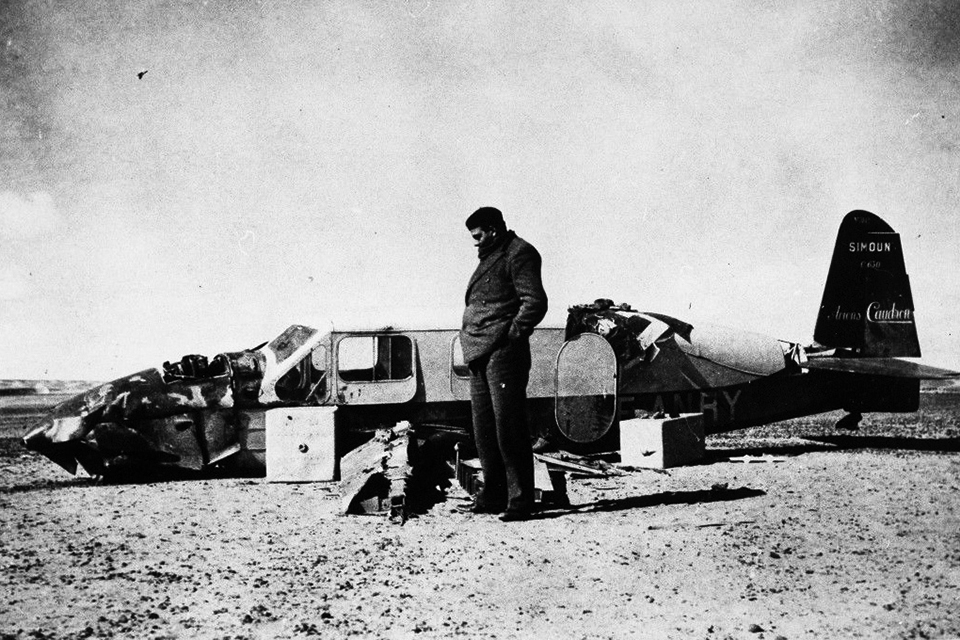
It was the end of Saint-Exupéry’s civil aviation career, except for an odd flight that he again pulled strings to be allowed to participate in, the transatlantic crossing of a huge Latécoère flying boat, Lieutenant de Vaisseau Paris, a six-engine aerial scow that labored across the Atlantic at a time when Pan Am Boeings and Martins were already routinely circling the globe. Saint-Ex was registered as the plane’s “second pilot,” though he never touched the controls. The airplane’s return trip in fact turned out to be the first nonstop flight of a commercial airliner from the U.S. to France.
The end ultimately came in true Saint-Ex fashion. He had often predicted and seemingly even hoped for his own death in flight, and when he used every bit of influence he could muster to get himself posted in 1944 back to the French squadron for which he had briefly flown before the fall of France in 1940—the experience that led to one of his few nonfiction works, Flight to Arras—he virtually guaranteed it.
For an aging, weary, 44-year-old intellectual with a body laced with half-healed fractures and bent bones to undertake a job that challenged well-trained fighter pilots half his age was madness. Flying an unpressurized, barely heated Lockheed F-5B to 30,000 feet for hours on end while photo-mapping was crippling. To do it while watching constantly for Focke-Wulfs and Messerschmitts was impossible for a grouchy old man who had to be helped into his cockpit, never mind neck-swiveling constantly to check his six. Yet on July 31, 1944, he set out on a grueling photo-mapping mission over the Mediterranean.
Unfortunately, too many fables about Saint-Ex’s lack of competence as a pilot in 1944 have found their way down through history. His nonpilot biographers assert that he once inadvertently flew a test hop in an F-5B unaware that he had only started one engine, not noticing because the other engine’s prop windmilled. Anybody who has ever flown a twin with one engine shut down, particularly if its prop is unfeathered, knows this is as likely as a racecar driver failing to notice that one front wheel is missing.
What turned out to be Saint-Exupéry’s F-5B was initially found at the bottom of the Mediterranean in 2000 and positively identified in April 2004. The broken, corroded and encrusted aircraft hulk showed no obvious signs of combat—bullet holes or flak damage—so the inevitable rumors have raged ever since.
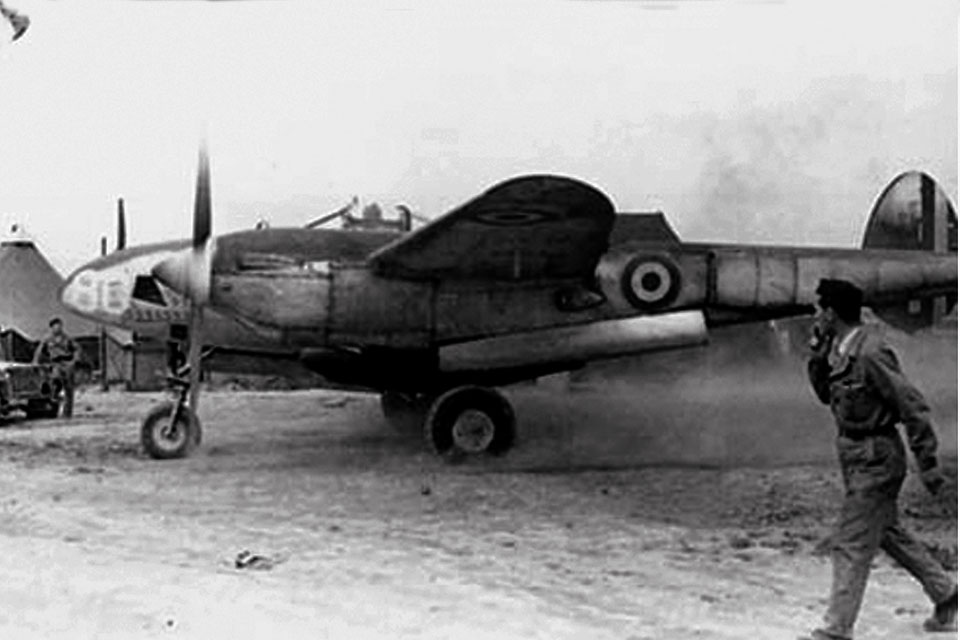
Perhaps Saint-Ex, known to be depressed and potentially suicidal at the time, put the yoke full forward intentionally. Amateur divers say the airframe is in so many pieces that it must have hit the water in a 500-mph dive, yet they also claim the wreckage is spread over half a mile—hardly the pattern of a vertical impact.
Maybe he mishandled the fuel and starved both engines. Possible, since he was by 1944 the aviation equivalent of those of us who can’t program a DVD player.
Possibly he depleted his oxygen supply and passed out. Not unlikely, since Saint-Ex was famous for turning his oxygen on even before takeoff; he didn’t want to have to remember to activate it later during climb-out, and he typically used twice as much O2 as any other squadron pilot.
Or, says Occam’s Razor, the simplest and most obvious answer is the correct one: He was shot down by a German fighter. There was no body in the cockpit to bear witness, and Luftwaffe records show no downing of a Lightning over the Med on that day, but military records on the losing side during the declining days of a war are a mess anyway. Though his story is impossible to substantiate, German ace Horst Rippert, today 88, recently claimed that he had been the unwitting killer. “If I had known it was him, I would never have fired,” Rippert said; he’d been an admirer of the Frenchman’s work ever since he was a schoolboy. Rippert claims to have caught a P-38 in the area where the Saint-Exupéry wreckage was found, flying so lazily that the pilot seemed to be begging to be dispatched. “He was looking around,” Rippert recalled. “He wasn’t bothered by my presence.”
Whatever caused it, the ensuing plunge into the sea closed the logbook of one of the most remarkable, talented, influential and complex aviators of the 20th century.
Frequent contributor Stephan Wilkinson has flown nearly 120 different types of aircraft ranging from Stearmans to B-17s—as well as the Sequoia Falco F.8L two-seater that he built himself. For additional reading, he recommends Saint-Exupéry, by Stacy Schiff.
Originally published in the September 2008 issue of Aviation History. To subscribe, click here.

